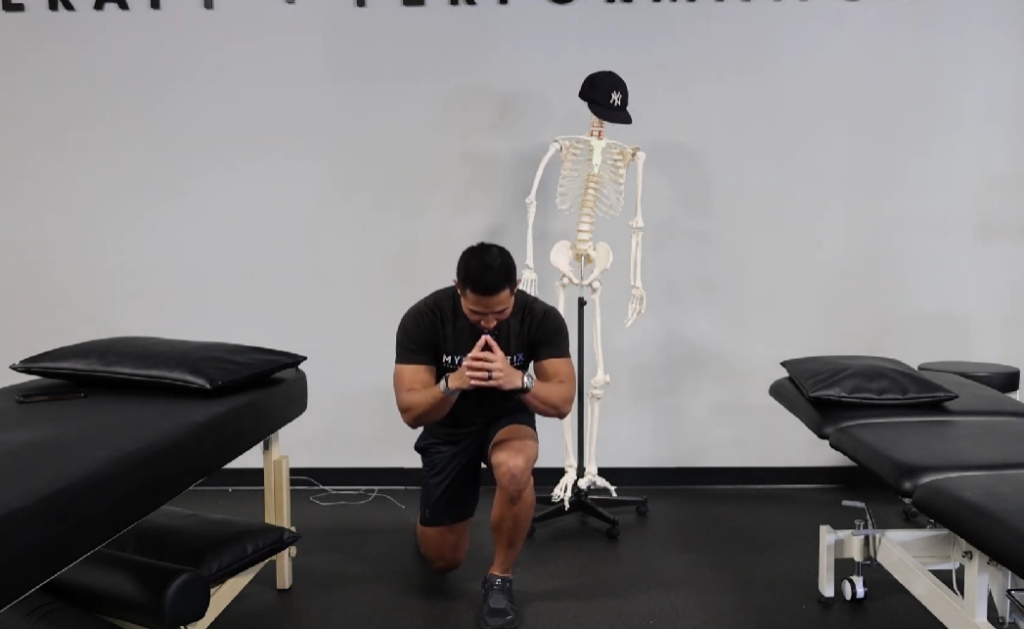If you are an avid marathon enthusiast, our goal is to support your passion for pounding the pavement by eliminating any potential hindrances in your running journey. We are dedicated to providing the tools and expertise you need to not only continue enjoying the thrill of marathons but also to enhance your overall running experience.

In this blog post, we’ll explore three essential strength exercises designed to prevent common running injuries. Whether you’re a seasoned marathoner or just someone who loves hitting the road, these exercises will help strengthen key muscle groups and keep you running smoothly.
Single Leg Lunges for Quads and Glutes
One common issue for long-distance runners is knee pain or discomfort. To address this, incorporate single-leg lunges into your routine. These exercises focus on strengthening your quads and glutes, which play a crucial role in propelling you forward during a run.


How to do it:
- Stand with your feet hip-width apart.
- Step one leg back, putting 70% of your weight on the front leg.
- Lower your body into a lunge position and focus on putting the weight in your back pocket.
- Come up and stand on one leg
- Perform four sets of 15 reps on each leg to build endurance and strength.
Wall Raises for Calves and Soleus:
Calf pain is also a common complaint among runners, and addressing this is crucial for injury prevention. The wall raises exercise targets your calves and the Soleus muscle, which stabilizes the back of your knee.


How to do it:
- Find a wall and stand with your back against it.
- Rise onto your toes, keeping your back against the wall.
- Lower your heels back down slowly.
- Perform 20 to 25 reps for three to four sets to feel a good burn and build calf strength.
Toe Raises for Tibialis Anterior
Stabilizing the front of your knee and controlling your foot placement is vital for effective running. The toe raise exercise targets the Tibialis Anterior muscle, aiding in foot control and overall stability.

How to do it:
- Stand against a wall, squeezing your quads.
- Point your toes up and bring them down slowly.
- Aim for three to four sets of 25 reps to strengthen this small but important muscle.
Check out this video to perform these exercises effectively.
If you want to learn more about how to protect your knees this marathon season check out this article on how to survive and finish strong during the marathon season.
Discover also an advanced and effective approach to running safely throughout marathon season by exploring our latest blog on force plate testing and elevate your running experience, reduce the risk of injuries, and finish strong.
Conclusion:
Incorporating these three strength exercises into your routine can significantly contribute to injury prevention and enhance your overall running performance.
Remember to perform them consistently and pay attention to proper form. Strengthening these key muscle groups will not only help you run more efficiently but also allow you to enjoy your favorite activity without unnecessary pain or setbacks. Stay committed to these exercises, and you’ll be well on your way to achieving your running goals for the season.
At Myokinetix, we help optimize the performance of marathon runners and all athletes, ensuring they achieve peak levels of endurance safely. Our team of experts utilizes state-of-the-art equipment and techniques to meticulously monitor and enhance running conditions, empowering athletes to navigate marathon season with confidence. Here’s to happy and strong running!
Book a call with our team here to learn more about how we can help you!

Thank you for sharing these valuable strengthening exercises tailored for marathon runners. It’s essential to prioritize injury prevention and overall performance enhancement when training for such endurance events.